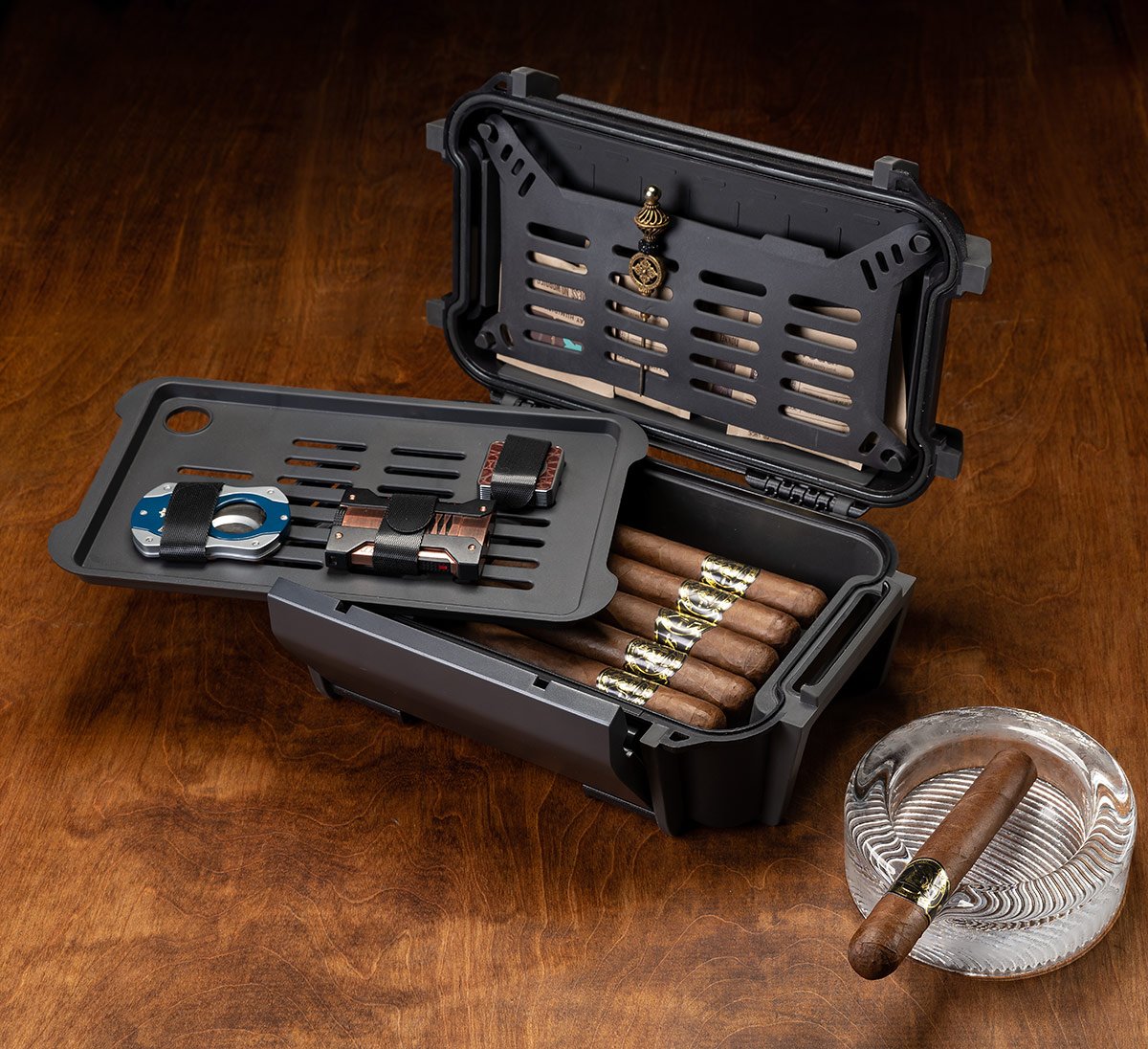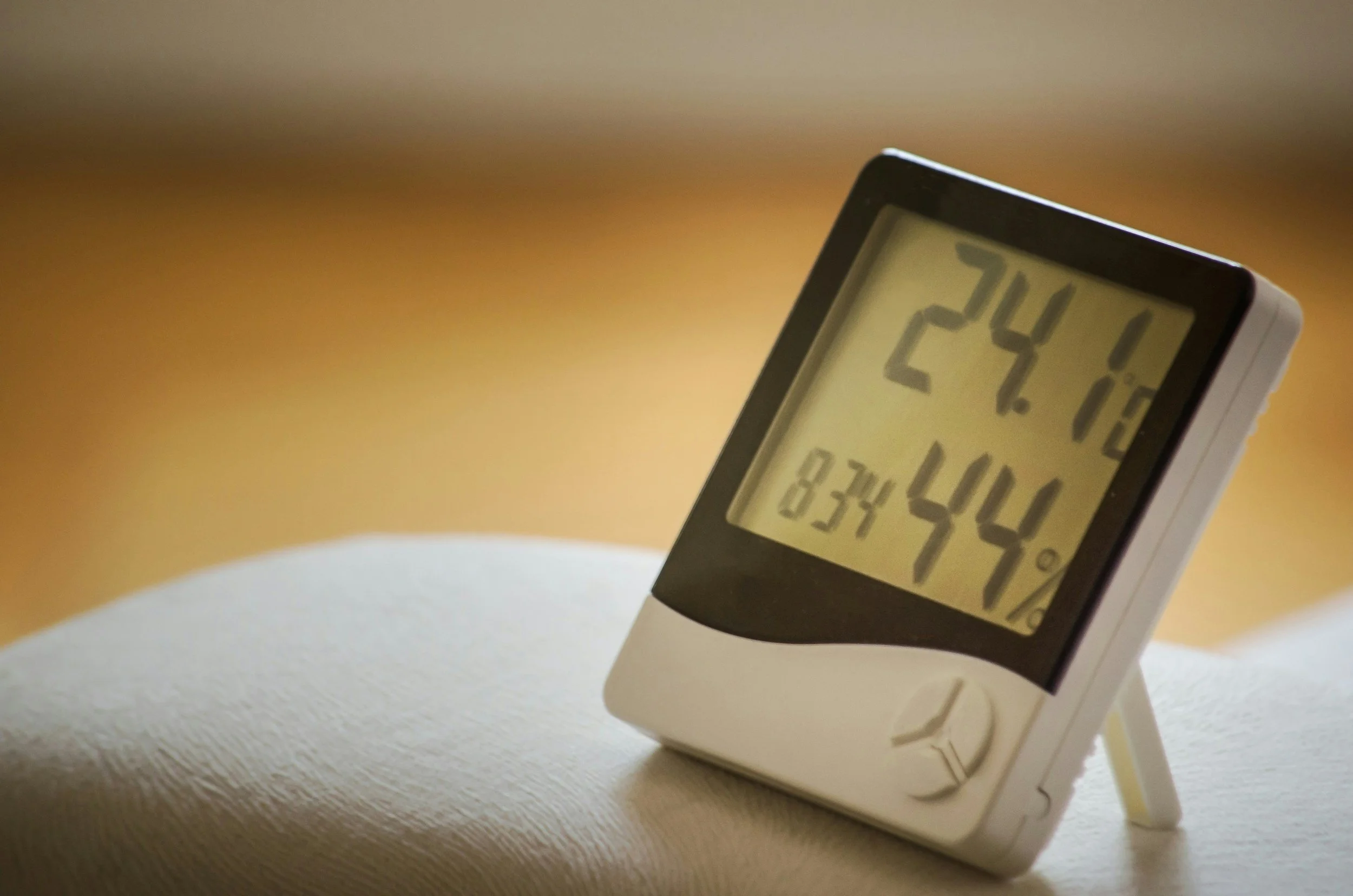Humidor Maintenance for Beginners
A well-maintained humidor is more than just a wooden box with a nice finish. It’s a controlled environment that keeps your cigars aging gracefully, their flavors maturing instead of fading away. The difference between a properly stored cigar and one that’s been left in a drawer is night and day. One will greet you with rich aromas, a smooth draw, and balanced flavor. The other? Bitter, dry, and disappointing.
So, whether you’re just starting your cigar journey or upgrading to a larger collection, knowing how to season, set up, and maintain a humidor is a skill worth mastering. Let’s start with the types you’re likely to encounter.
Types of Home Humidors
Humidors come in different shapes and sizes, and your choice will depend on your space, your budget, and how many cigars you plan to keep on hand.
Desktop humidors are the most common entry point. They usually hold between 25 and 100 cigars, making them perfect for someone who enjoys a few smokes a week. You’ll see these on desks, shelves, or side tables. They’re small enough to be portable if you need to move them, but large enough to keep a decent rotation of cigars on hand. They’re also easier to maintain since they require less humidification effort than bigger cabinets.
Cabinet or standing humidors are the step up. Think of them as the wine cellars of the cigar world. They can hold hundreds, sometimes thousands of cigars. These are best suited for collectors or those who buy in bulk. Because of their size, they require more advanced humidification systems, often electronic, to ensure even moisture distribution. Placement is critical for these; they should be kept in a stable-temperature room, away from sunlight, and ideally not in a garage or attic where temperature swings are dramatic.
Travel humidors are for short-term storage while on the move. They’re usually airtight plastic or leather cases lined with foam or cedar, designed to hold anywhere from 2 to 20 cigars. They aren’t meant for long-term aging, but they’re a lifesaver if you’re going to a wedding weekend, a golf trip, or just commuting with a couple of sticks.
Regardless of size, the function is the same: keep cigars at a consistent relative humidity between 65–70% and temperature between 65–70°F. Stray too far in either direction and you’ll notice the difference in how your cigars burn, taste, and feel.
Small desktop humidor
Standing humidor
Travel humidor
How to Season Your Humidor
If you’ve just bought a new humidor—or if you have one that’s been sitting empty for months—you need to season it before storing cigars. Spanish cedar, the wood most often used inside humidors, starts out bone-dry. Without seasoning, it will suck the moisture right out of your cigars, leaving them dry and harsh.
Here’s the best method for seasoning:
Wipe down the interior with a clean, lint-free cloth that’s been lightly dampened with distilled water. Lightly is key. The goal is to raise the wood’s moisture level, not soak it. Too much water can cause swelling, warping, or mold.
Introduce moisture gradually. Place a small, shallow dish of distilled water inside (not touching the wood) or use 84% Boveda seasoning packs designed specifically for this purpose. Close the lid and leave it undisturbed for 48–72 hours.
Check the hygrometer. Once the humidity stabilizes above 70% and holds for at least 24 hours without dropping, you’re ready to load cigars.
A good tip here: seasoning is not a one-and-done task for life. If you live in a dry climate or haven’t used your humidor in months, you may need to repeat the process.
Setting Up a Hygrometer
A hygrometer measures relative humidity. Without one, you’re basically guessing whether your cigars are at risk of drying out or over-humidifying.
Digital hygrometers are the most reliable. They’re inexpensive, easy to read, and usually accurate to within ±2%. If you prefer the old-school aesthetic, you can go with an analog hygrometer, but be prepared to calibrate it more often.
Here’s how to calibrate any hygrometer using the salt test:
Place the hygrometer in a small, airtight plastic bag along with a bottle cap or small dish containing damp (not wet) table salt.
Seal the bag and let it sit for 6–8 hours. The environment inside will stabilize at 75% relative humidity.
Check the reading and adjust the hygrometer to 75%, or note how far off it is so you can mentally compensate.
Position the hygrometer so you can see it without digging through cigars. In a desktop humidor, the lid is a good spot. In a cabinet humidor, place it at eye level for quick checks.
Digital hygrometer
Choosing a Humidification System
Your humidification setup is what keeps the environment inside your humidor stable. The right system depends largely on your humidor’s size and your own maintenance style.
Traditional foam or gel humidifiers are included with many humidors. They work, but they require you to add distilled water or a propylene glycol solution regularly. The glycol helps regulate humidity and prevents mold, but it can break down over time, so the unit will eventually need replacing.
Boveda packs are a favorite among modern cigar smokers. They’re low-maintenance, disposable, and provide two-way humidity control, meaning they add or remove moisture as needed. For most home humidors, the 69% or 72% packs are ideal. Replace them when they feel rigid.
Electronic humidifiers are a must for larger cabinet humidors. They circulate humidity with a small fan, keeping conditions consistent across all shelves. While they cost more upfront, they’re easier to maintain and only require occasional refilling with distilled water.
A best practice regardless of system: never use tap water. Minerals, chlorine, and other additives in tap water can cause buildup and even mold growth. Stick to distilled water or pre-mixed humidification solution.
Ongoing Maintenance Habits
Once your humidor is set up, keeping it in shape becomes a matter of routine.
Check humidity and temperature weekly. A small digital thermometer/hygrometer combo makes this simple. Short-term swings aren’t a problem, but long-term trends—like a steady drop over a few weeks—mean you need to take action.
Rehydrate your humidifier promptly when it’s running low. Don’t wait until your cigars start feeling dry.
Rotate your cigars monthly. Move the ones from the bottom to the top and vice versa. Even in a well-maintained humidor, micro-climates can form inside, and rotation ensures even aging.
Control the environment around your humidor. Keep it out of direct sunlight, away from vents, and out of rooms where temperatures swing widely.
Clean periodically. Every few months, remove the cigars, wipe down the interior with a dry cloth, and let the humidor air out for an hour before restocking.
Troubleshooting Common Issues
If the humidity is too low, add more or larger humidifiers, or temporarily increase the RH level of your Boveda packs. For foam humidifiers, recharge more often.
If it’s too high, remove a humidifier for a few days and open the lid briefly once a day to let some moisture escape. Keep an eye out for mold in this scenario.
If there’s a musty odor, remove all cigars and humidification devices, wipe the cedar with a clean, dry cloth, and leave the lid open for a day or two. You may also place a small dish of dry baking soda inside (in its container, not spilled) to help absorb odor.
If you treat humidor maintenance as part of the cigar-smoking experience—not a chore—you’ll quickly notice the payoff. Cigars will stay supple, flavors will stay rich, and you’ll avoid the frustration of watching your investment turn brittle or soggy. A good humidor doesn’t just store cigars, it elevates every single one you smoke.
Humidor Maintenance Timeline
Daily
Quick glance at hygrometer: Make sure humidity and temperature look normal (around 65–70% RH, 65–70°F).
Check for unusual odors: A musty smell can be the first warning sign of mold.
Lid discipline: Open only when needed, and close it promptly to keep conditions stable.
Weekly
Detailed reading of hygrometer/thermometer: Record the numbers in a small log or phone note so you can spot trends.
Physical check of cigars: Lightly squeeze one or two. They should feel firm with a slight give, not brittle or spongy.
Inspect humidification device: Top up with distilled water or replace Boveda packs if they’re starting to stiffen.
Monthly
Rotate cigars: Swap top-row cigars with bottom-row ones, front with back. This evens out any subtle differences in humidity.
Visual inspection of interior cedar: Look for swelling, cracks, or any spots of discoloration.
Wipe down interior (dry cloth): This removes cedar dust and helps keep things fresh.
Quarterly (Every 3–4 Months)
Deep clean and air-out: Remove all cigars, wipe interior with a clean, dry cloth, and let the humidor sit open for an hour in a clean, dry room.
Check calibration of hygrometer: Repeat the salt test or another calibration method to ensure accuracy.
Inspect humidification system for wear: Gel beads breaking down, foam degrading, or fans in electronic systems running sluggishly should be addressed.
Annually
Season again if needed: Especially if you live in a dry climate or your humidor has been in heavy use, a light re-seasoning keeps the cedar healthy.
Full inventory check: Discard or separate any cigars showing signs of beetles, mold, or significant cracking.
Replace aging humidification gear: Foam devices, old electronic humidifiers, or hygrometers that no longer hold calibration should be swapped out.




